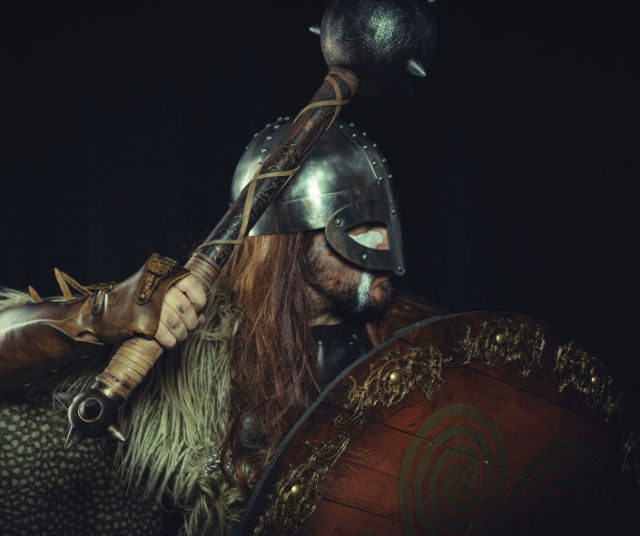The Viking Pilgrimage of Catoira is an annual event held in the municipality of Catoira, located in the autonomous community of Galicia , in northwestern Spain . This fascinating festivity recreates the history and legends of the Vikings who once reached the Galician shores, immersing attendees on a journey into the epic past.
Historical Origin
The historical origin of the Viking Pilgrimage of Catoira is based on the historical facts of the Viking presence in the region of Galicia, in the northwest of Spain, during the 11th century. The Vikings, coming from Scandinavia, were known for their sea raids in search of treasure and riches. During that period, the Galician coasts became one of the destinations for the Vikings, who established a settlement in the town of Catoira . At Catoira, the Vikings built a defensive fortress known as Torres de Oeste . These towers were used as a strategic point to control Viking raids in the region. The Vikings, feared and respected for their skill in navigation and warfare, left an important mark on the history of Galicia.
The idea of celebrating the Viking Pilgrimage in Catoira arose in the 1960s, when a group of enthusiastic young people decided to recreate the historical events and honor the Viking presence in the region. This initiative began as a small theatrical performance and, over time, became a nationally and internationally recognized annual festivity. The objective is to keep the memory of those times alive and transmit the cultural and historical legacy to the new generations. The recreation of the Viking landings and the assault on the Western Towers during the festival allows participants and spectators to immerse themselves in the atmosphere of the time and relive the history of the Vikings in Galicia.
Over the years, the Viking Pilgrimage has evolved and has been enriched by the participation of theater groups, artists, musicians and volunteers who are dedicated to keeping the historical essence of this event alive. The festivity has become one of the most emblematic celebrations in Galicia , attracting thousands of visitors who wish to witness the re-enactment of historical events and enjoy the cultural and festive activities that accompany it.
The Viking Pilgrimage
The Catoira Viking Pilgrimage takes place on the first Sunday of August each year and consists of a series of activities and performances that recreate the arrival of the Vikings and the defense of the West Towers. Next, we will detail the main characteristics of this impressive celebration:
- Viking Landing: The festivity begins with the simulated landing of the Vikings on the banks of the Ulla River , which surrounds the town of Catoira. Participants dressed in Viking costume disembark in traditional boats, creating a spectacular scene that transports attendees to times past.
- Assault on the Western Towers: After the landing, the Vikings advance towards the Western Towers , where a theatrical representation of the assault on the fortress takes place. The actors recreate the battle between the Vikings and the defenders, immersing viewers in an atmosphere of excitement and adrenaline.
- Viking Market: During the Viking Pilgrimage, a thematic market is installed where you can find handicrafts, typical foods and objects related to Viking culture. Visitors can enjoy the experience of touring a medieval market, buying souvenirs and tasting traditional Galician dishes.
- Cultural Activities: In addition to the theater performances and the market, the Viking Pilgrimage offers a variety of cultural activities for attendees. This includes traditional Galician music concerts, craft exhibitions and typical dance exhibitions.
- Procession and Floral Offering: One of the most emotional moments of the festivity is the procession that takes place to the monument to the Vikings in Catoira. Participants carry flowers and pay homage to the ancient Vikings who came to these lands.
- Costume Contest: To liven up the festivities even more, a Viking costume contest is held where participants compete to wear the most elaborate and creative outfits. This contest adds a touch of fun and active participation by the public.
We could say that this festivity seeks to honor and preserve the memory of those times through theatrical performances, Viking landings and cultural activities that allow participants and visitors to immerse themselves in the epic history of the Vikings in Galicia.
